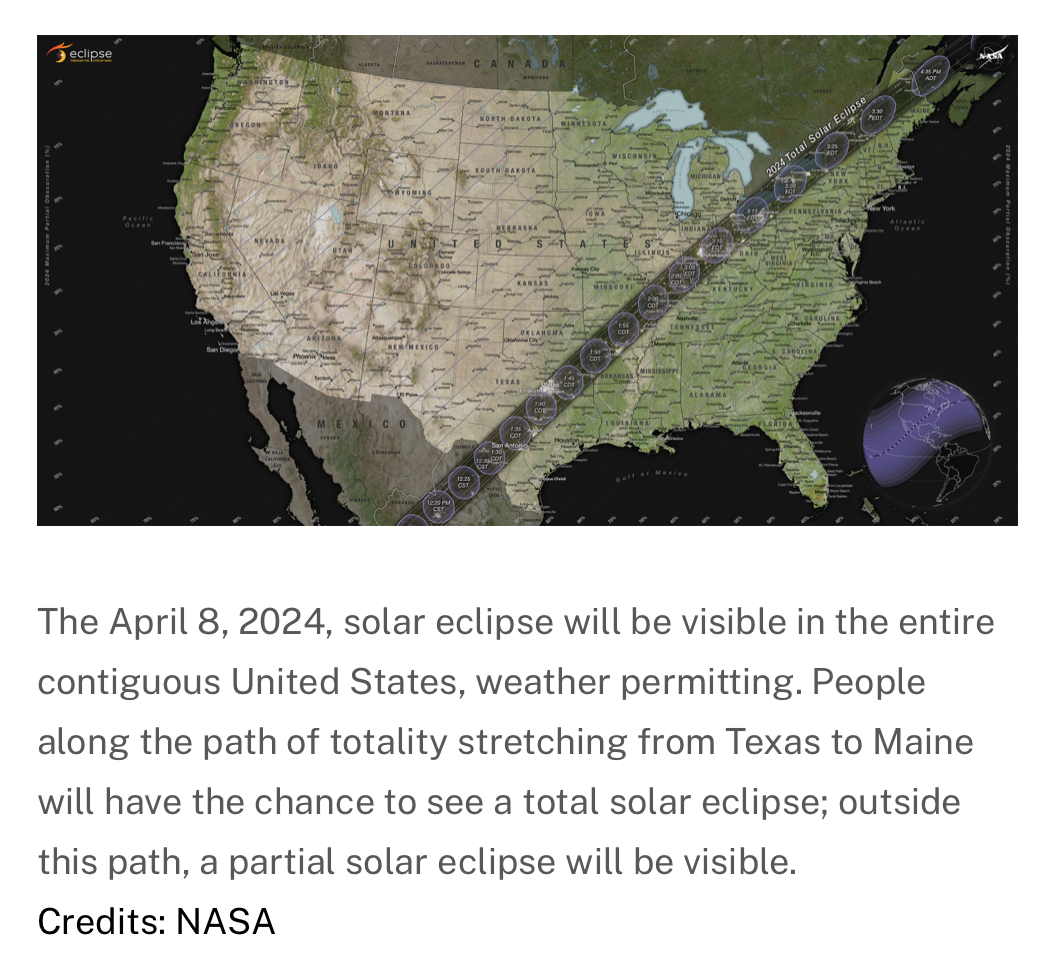How to Safely Enjoy Today’s Solar Eclipse and Savor the Moment
There will be a solar eclipse today, Monday, April 8. A solar eclipse occurs when the moon passes between the earth and the sun, blocking the sun’s light. In the path of totality, the moon completely blocks light from the sun, resulting in a few brief minutes of darkness during which the sun’s outer atmosphere — the corona — creates a glowing halo around the moon.

Why is this solar eclipse noteworthy?
The most recent solar eclipse visible in our area happened in 2017 — so what’s the big deal about this one? What makes today’s eclipse extra special is its path of totality — it will cover an even wider area and last twice as long as the 2017 event. Moreover, scientists believe that an eclipse like this one won’t be visible in our area again until 2044!
While the DMV area won’t experience totality, we’ll see about 90% of the sun being eclipsed by the moon. Your geographic location will determine the exact timing of the eclipse. In our area, the eclipse will begin at approximately 2:05 p.m. and end at approximately 4:32 p.m. The maximum eclipse will be at approximately 3:19 p.m. Don’t miss this awe-inspiring event: take some time to pause, take it in and savor the moment.
Remember, safety first!
How do you safely view a solar eclipse? Looking directly at the sun at any time is unsafe for your eyes. But looking at the sun during an eclipse, when you want to watch it progress, can cause permanent damage. At all times, including during the partial phase of the eclipse, you must wear certified solar eclipse glasses or use one of the recommended alternative methods for safe viewing. Do NOT use regular sunglasses, solar filters meant for cameras and telescopes, smoked glass, welder’s goggles, photographic or X-ray film, snack bags or food packaging, or DVDs to view the partially eclipsed sun.
For interesting educational videos and much more, visit the Smithsonian Air and Space Museum’s dedicated eclipse page.
Make this Monday your day to take it in. Let awe have a moment and savor the experience!
Use the Monday Check-In to help support your wellness efforts. Each week, take what you need and leave what you don’t.

Submitted by:
Faith Redd-Walker, Office of Employee Wellness and Wellbeing, employeewellbeing@nvcc.edu
